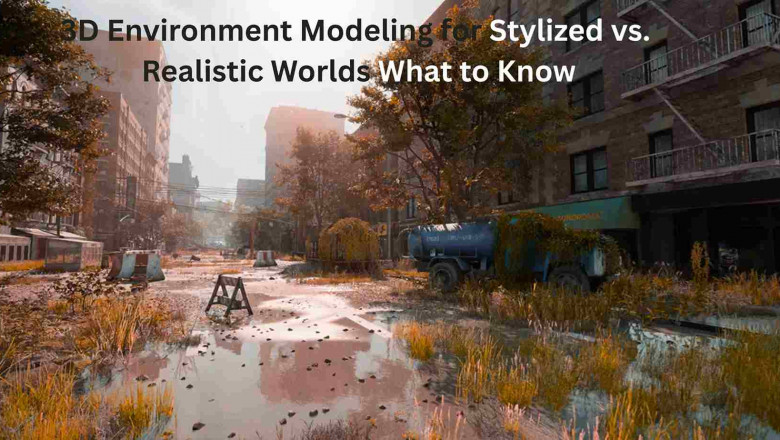views
3D environment modeling plays a crucial role in creating immersive game worlds, whether they are stylized or realistic. The choice between stylized and realistic worlds significantly influences the design process, asset creation, and overall game aesthetics. In this blog, we will explore the key differences between stylized and realistic 3D game environments, the techniques used for each, and what to consider when choosing a style for your game project.
Understanding 3D Environment Modeling for Games
In game development, 3D game environment can be categorized as stylized or realistic. Each has its own set of techniques, tools, and artistic approaches. Before delving into their differences, let’s clarify what these two styles entail.
Stylized vs. Realistic 3D Game Environments
Stylized 3D Game Environments
They are less concerned with realism and more focused on conveying a distinct visual identity. Examples of stylized game environments include fantasy-themed worlds, cartoon-like settings, and surreal landscapes.
Techniques and Tools for Stylized Environments:
- Hand-Painted Textures: Artists create custom textures to give objects a hand-crafted look.
- Simple Geometries: Shapes are often simplified and exaggerated.
- Bright Color Palettes: Bold, vibrant colors are used to convey a whimsical atmosphere.
- Non-Photorealistic Rendering (NPR): Techniques like cel shading are employed to achieve a cartoon-like effect.
Popular games with stylized environments include The Legend of Zelda: Breath of the Wild, Fortnite, and Overwatch.
Realistic 3D Game Environments
Realistic environments aim to replicate the real world as closely as possible, utilizing high-resolution textures, detailed models, and advanced lighting techniques. These environments often require more resources and time to create, but provide a visually striking experience.
Techniques and Tools for Realistic Environments:
- Photorealistic Textures: Textures are sourced from real-world references to achieve realistic surface details.
- High-Poly Models: 3D game assets are meticulously modeled to include intricate details.
- Advanced Lighting and Shading: Techniques like ray tracing and global illumination are used.
- Physics Simulation: Realistic physics enhances the immersive experience.
Hard Surface vs. Organic 3D Modeling Games in Both Styles
- Hard Surface Modeling: This involves creating objects with rigid surfaces such as vehicles, weapons, and architectural structures. It is commonly used for 3D vehicle modeling like car 3D models, props 3D model, and environmental assets.
- Organic Modeling: Organic modeling focuses on natural, flowing shapes like trees, rocks, and characters. This style is more prominent in stylized environments but is also used for realistic settings.
- What to Consider When Choosing a Style
- Target Audience and Game Genre: Stylized visuals appeal to a broader audience and are more suitable for casual or fantasy games, while realistic visuals are ideal for immersive storytelling and simulation games.
- Development Time and Resources: Realistic environments require more assets, textures, and processing power, leading to longer production times and higher costs.
Conclusion
Choosing between stylized and realistic 3D environment modeling depends on the game’s artistic direction, audience, and technical requirements. Both styles have their own unique challenges and benefits, and understanding their differences is crucial for creating compelling 3D game worlds. Whether you are designing a fantasy realm with hand-painted textures or a gritty post-apocalyptic city with photorealistic assets, the right approach can elevate your game’s visual impact and player engagement.






















Comments
0 comment